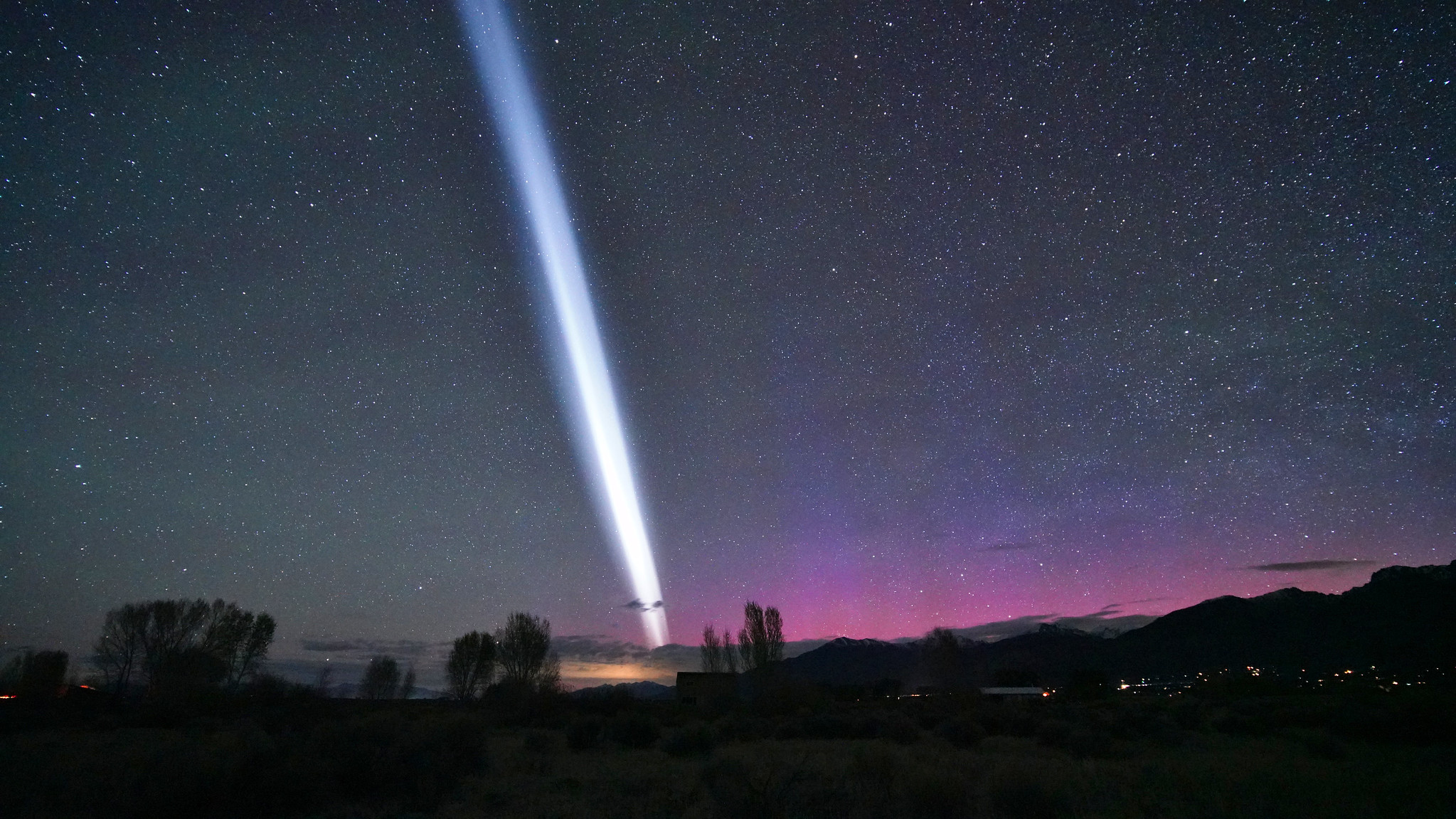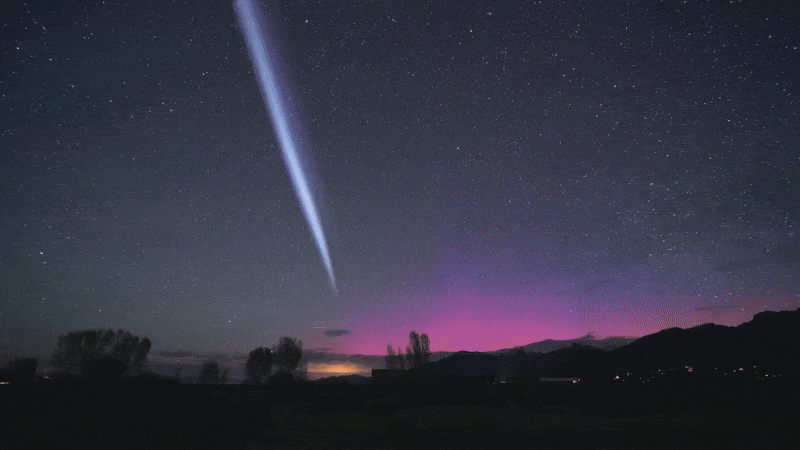
Skywatchers across the U.S. were treated to a startling sight on May 17 as a mysterious white plume tore through the sky during a surprise geomagnetic storm.
At first glance, you could be mistaken for thinking it was a strange version of STEVE — a rare atmospheric phenomenon that can accompany the northern lights. But skywatchers quickly realized it was something entirely different.
The culprit? A Chinese rocket launch. Roughly an hour earlier, Chinese company Landscape launched its Zhuque-2E methane-fueled rocket from Site 96 at the Jiuquan Satellite Launch Center (JSLC) in China. It carried six satellites into orbit, including a radar spacecraft and a space science payload. When the upper stage reached about 155 miles (250 kilometers) in altitude, it carried out a "fuel dump" according to astronomer Jonathan McDowell, whereby the ejected fuel froze into a ribbon of crystals which then reflected sunlight back to Earth, appearing as a distinct white streak in the sky.
TLEs confirm the Zhuque-2 upper stage passed over the US Four Corners area at 0525 UTC May 17 and is the source of the unusual luminous cloud seen by many observers.May 17, 2025
"The aurora was rippling low on the northern horizon when suddenly a bright streak of light, reminiscent of a rocket re-entry, appeared high in the sky and flowed down to the horizon," photographer Mike Lewinski told Spaceweather.com.
Lewinski captured the entire event unfolding alongside stunning auroras in the skies above Crestone, Colorado.
The moderate (G2 class) geomagnetic storm came as quite a surprise, kicking off early Friday (May 16) after Earth caught the glancing blow of a coronal mass ejection (CME). The CME was launched during a colossal filament eruption on May 12 from the sun's northern hemisphere. Initially expected to miss Earth, the "bird-wing" ejecta was wider than predicted, with some of the material striking Earth 4 days after it left the sun.

Aurora photographer Derick Wilson also captured the bright white streak above Farmington, New Mexico.
"The #aurora was visual but colorless... then the brightest sight I've ever seen in the night sky appeared overhead!" Wilson wrote in a post on X.
Around 1130pm MST May 16 north of Farmington New Mexico 38N, I was hyperlapsing with a Galaxy S24 ultra. The #aurora was visual but colorless... then the brightest sight I've ever seen in the night sky appeared overhead! #northernlights #auroraborealis pic.twitter.com/6lXJsiwHwHMay 17, 2025
Photographer Tyler Schlitt captured the white plume from southern Kansas, U.S. Schlitt, like many, had originally thought STEVE had appeared. But soon learned it was something entirely different.
Just saw STEVE with my friends here in Southern Kansas is 45 minutes north of Greensburg! #kswx @Vincent_Ledvina @evanjames_wx @TuckerWilliam88 @WickyDubs2 @AuroraNotify @spacewxwatch @TamithaSkov @AStormofPassion pic.twitter.com/LDzQPl1HAMMay 17, 2025
"Learning that it’s a rocket launch yet again from China is wild! One year ago and a few day I saw the same thing and was unsure but that one seem more of a rocket dump this one fell extremely close," Schlitt wrote in an X post comment.
It's not the first time a rocket launch has left skywatchers scratching their heads. SpaceX's Falcon 9 rockets, for instance, have created dazzling spiral patterns that swirl across the sky — strange sights that often spark confusion and awe, especially for first-time viewers who might mistake them for something truly otherworldly.







